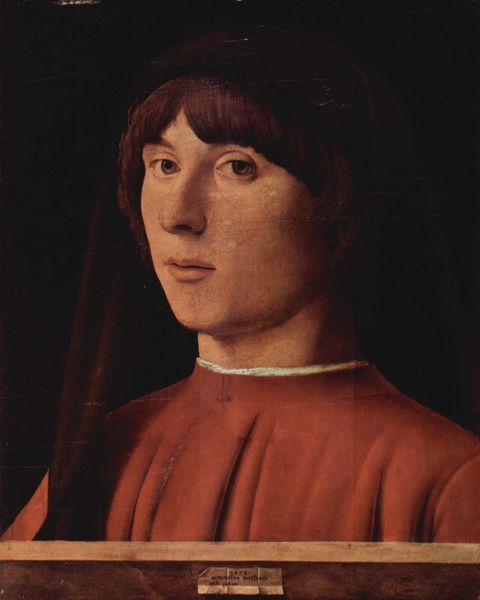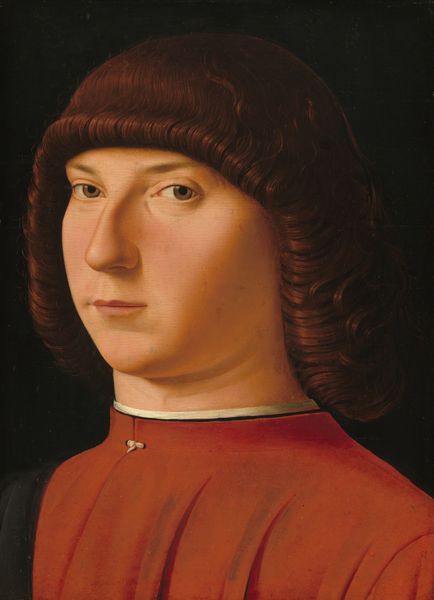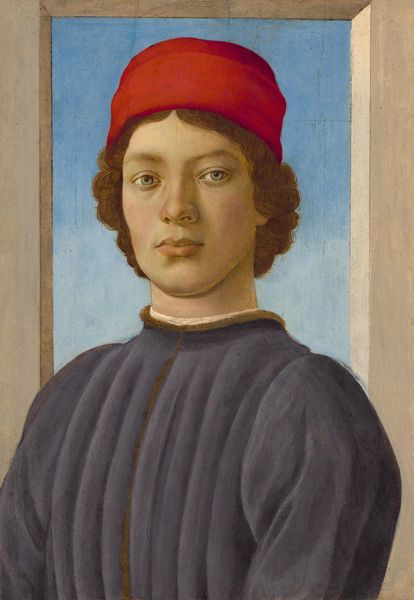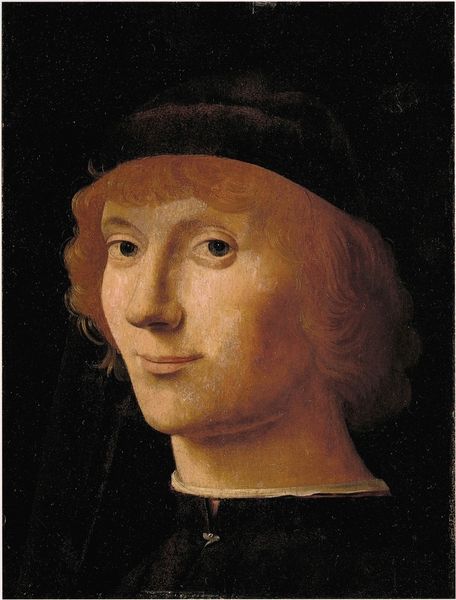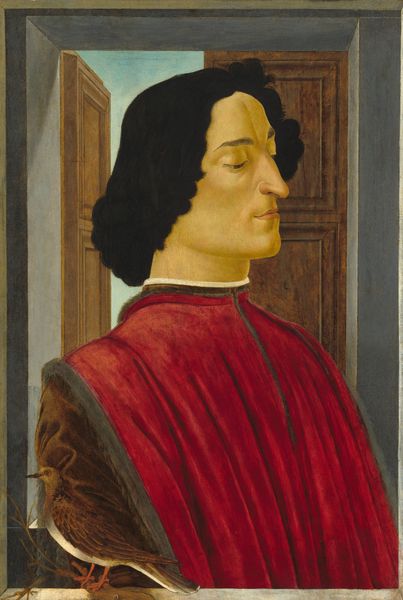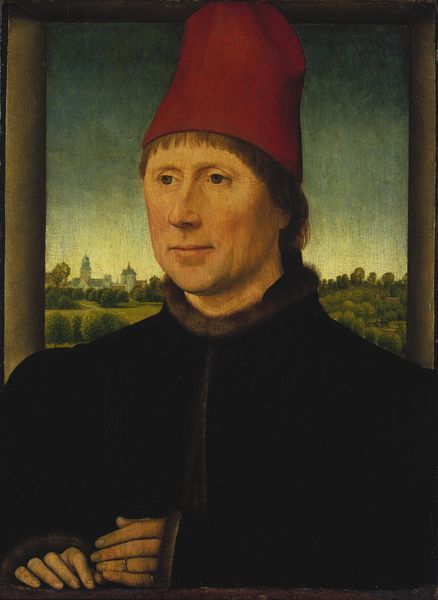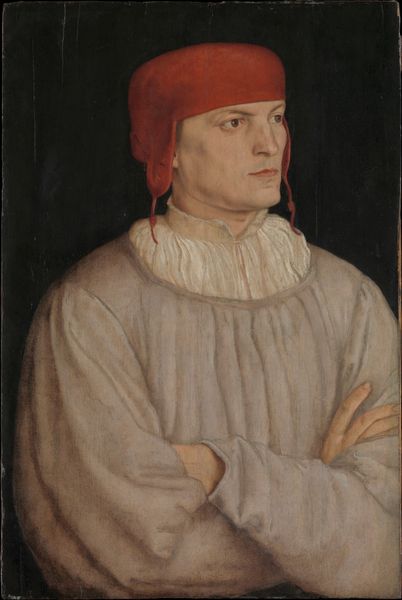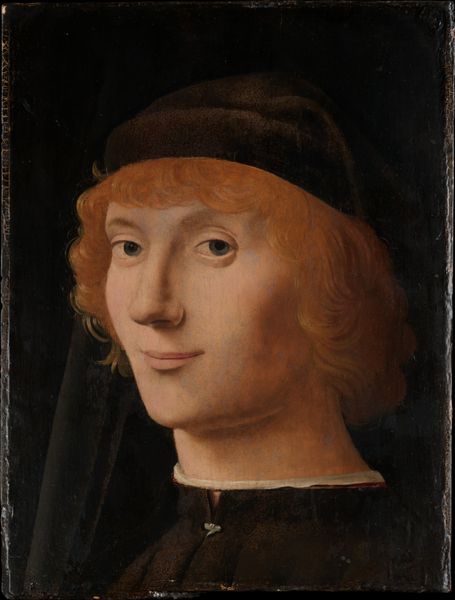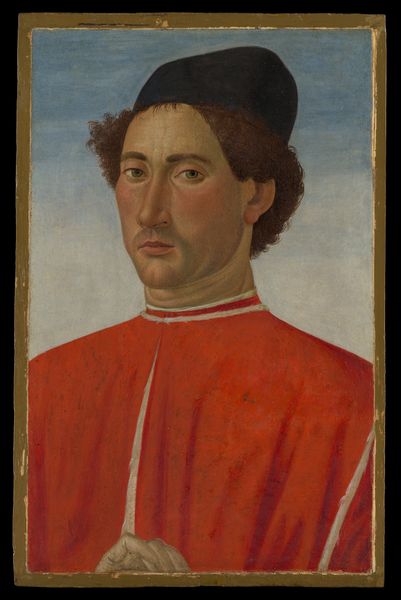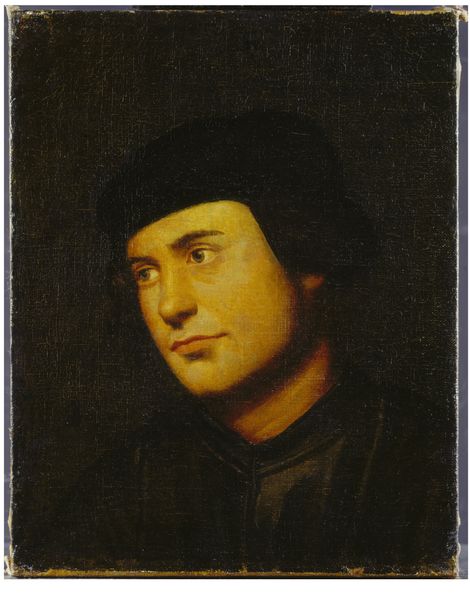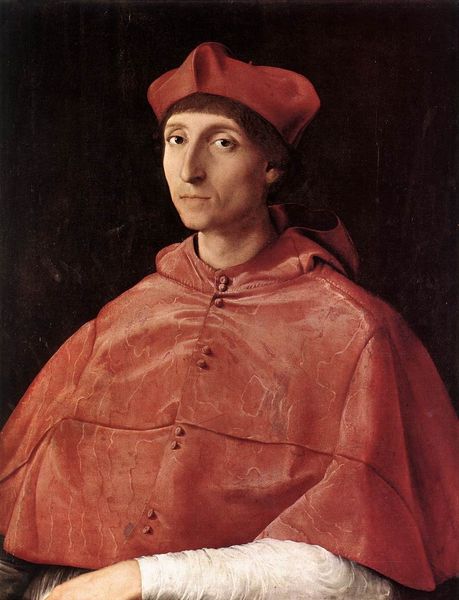
painting, oil-paint
#
painting
#
oil-paint
#
figuration
#
history-painting
#
academic-art
#
italian-renaissance
#
early-renaissance
Copyright: Public domain
Curator: This painting, "Portrait of a Young Man," was crafted by Pinturicchio around 1502, using oil paints. Editor: The first thing that strikes me is the starkness, the intense red against that heavy black background. There’s almost a stage presence created just by these color choices. Curator: It’s a study in Renaissance portraiture, certainly, and one could read it purely through the lens of early oil painting techniques. Consider the layering Pinturicchio employed; each thin glaze contributes depth, while also bearing evidence of a particular artisanal labor of that time, a moment of burgeoning artistic guilds and a newly robust art market. Editor: Absolutely, the material construction is key. However, I’m drawn more to the cultural codes encoded in that red clothing and cap. Red in that period had powerful associations with wealth, status, even a certain divine favor. It suggests something of this young man’s role and potential trajectory within his society. The fact that he's a "young man," the focus is on youth—a blank slate ready for the historical process of change. Curator: Yes, the attire does signify a level of social standing, a class position made possible by specific economic configurations within Florence or possibly Rome at the time. This access dictated his representation, its mode of display, and, in essence, helped form the art object. The way the red paint was sourced, processed, distributed, its pigment derived from specific locales and trades — each aspect grounds the symbolic in a complex reality. Editor: Yet it's still undeniably symbolic. Look at the tilt of his head, the slight unease in his eyes. It doesn’t convey arrogance, but rather self-consciousness, perhaps an awareness of the very expectations you're describing. This speaks volumes about youth negotiating societal roles and demands through an iconographic register we still understand today. It's not just his social class, it's his inner psychological life rendered visible. Curator: I see your point about the visual language used for youthful projection, a narrative expressed using visual markers and artistic agency shaped through available material resources. Thinking through materials opens insights on art production as impacted by technology and even early globalization; where was the pigment sourced, how was canvas prepared? All material facts influencing representation. Editor: By thinking of this work from multiple points of origin, and through both visual symbolism and its underlaying material, perhaps, we come a little closer to this painting’s mysteries. Curator: Indeed. Looking at how meaning is produced, not only within a portrait, but in a much larger sense with the historical creation and cultural production of the portrait itself allows us to examine the conditions which made it possible.
Comments
No comments
Be the first to comment and join the conversation on the ultimate creative platform.
